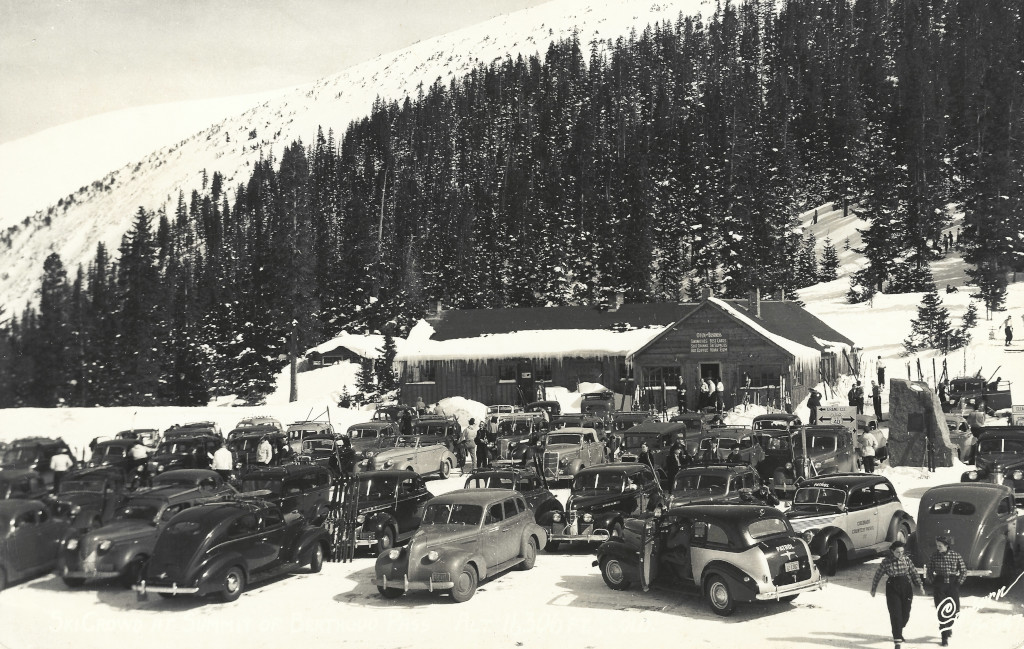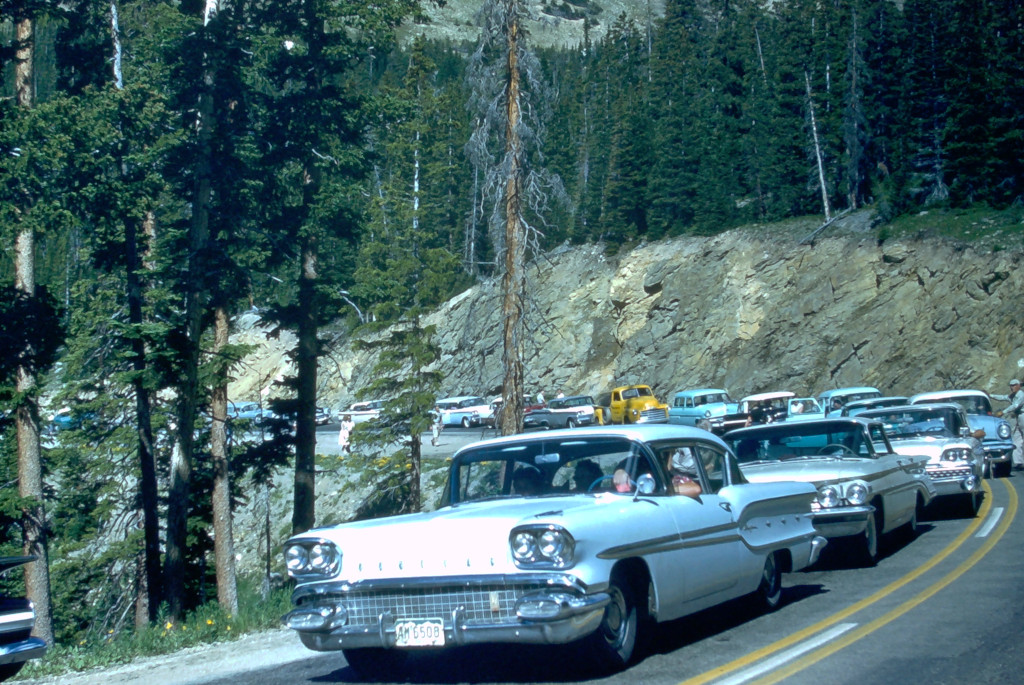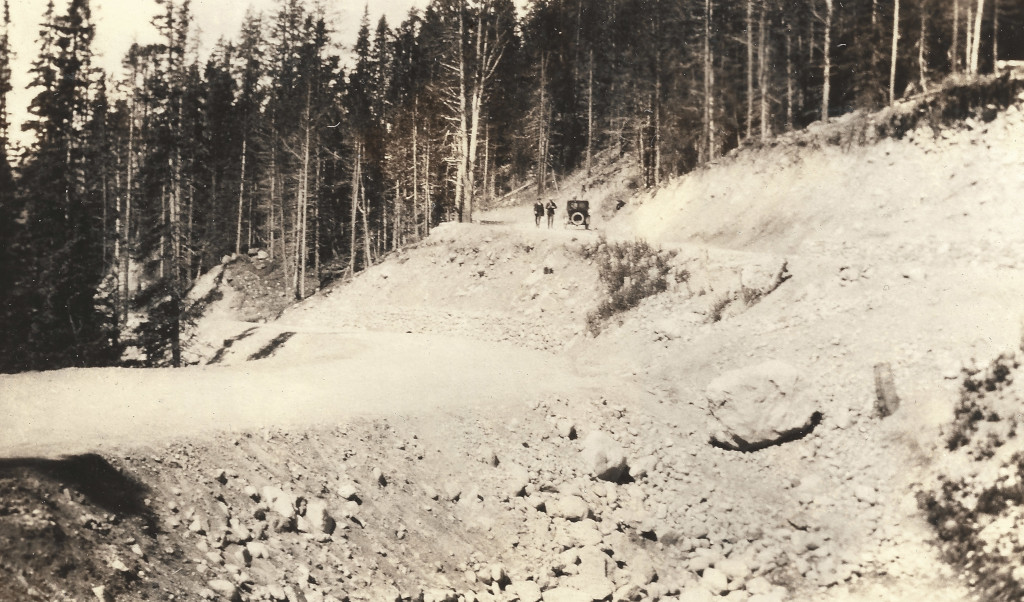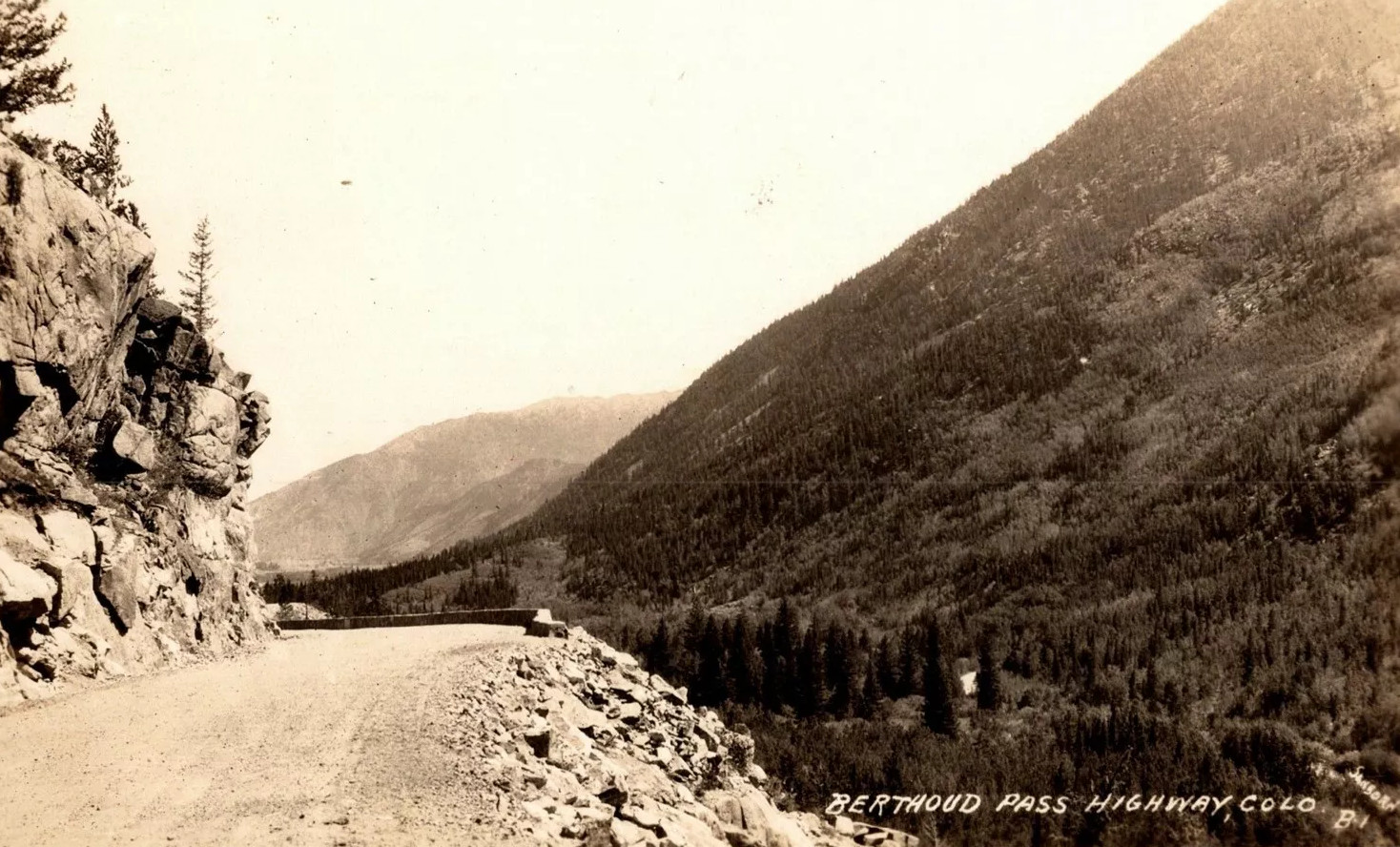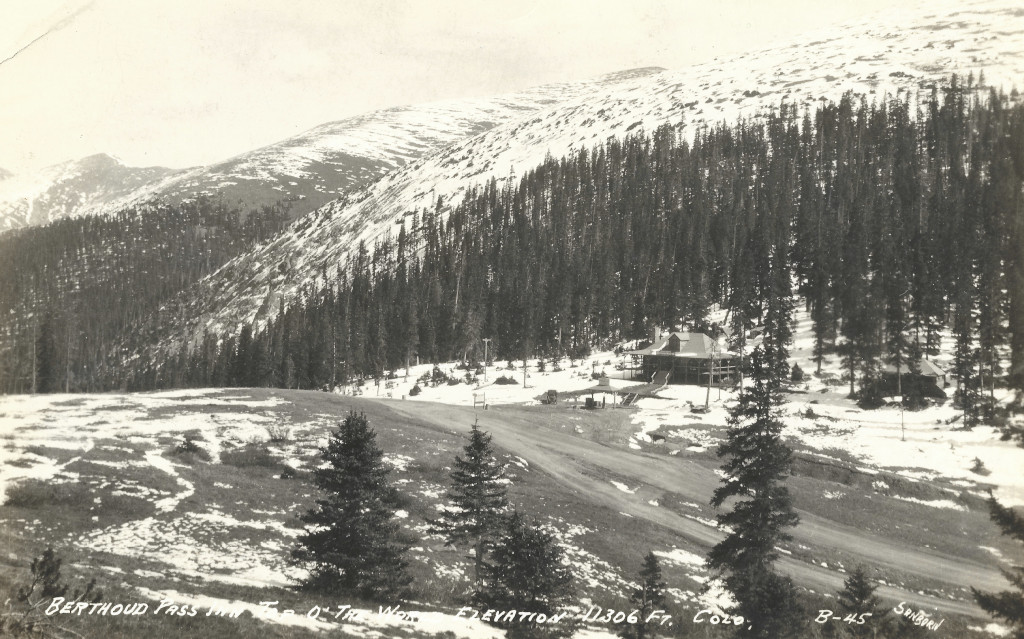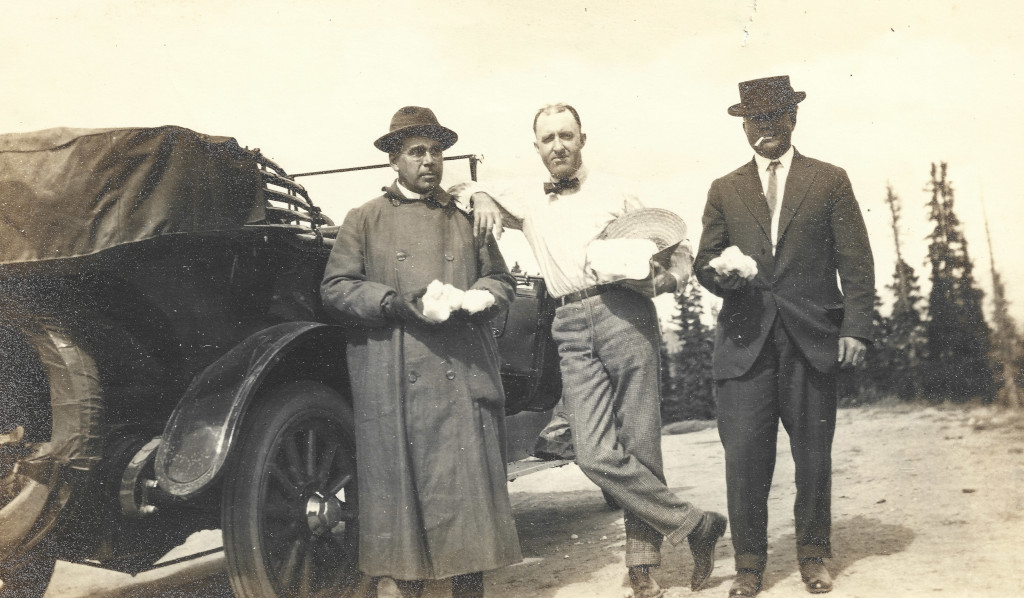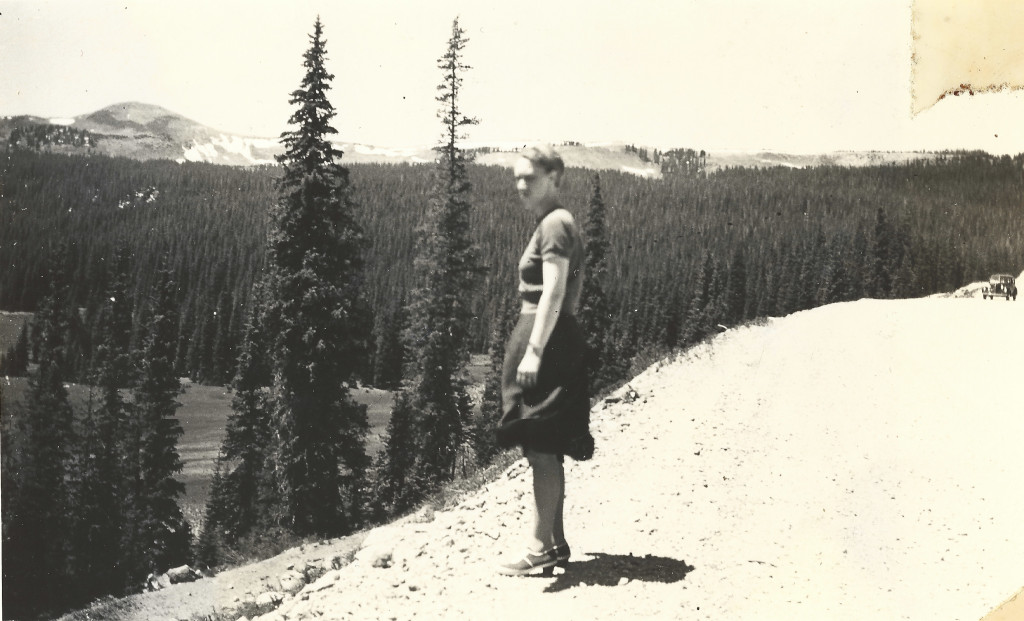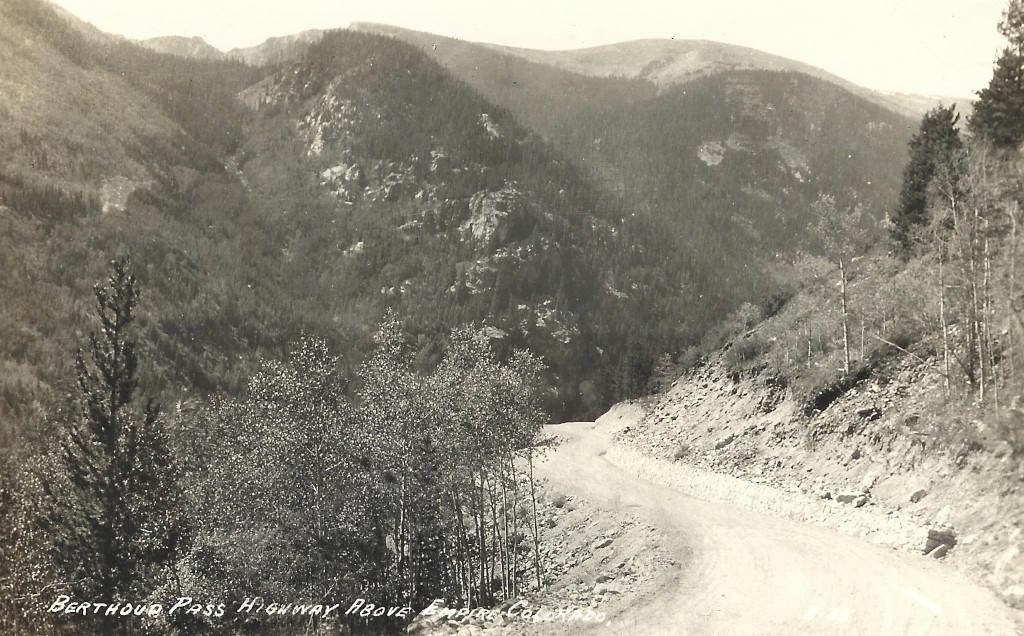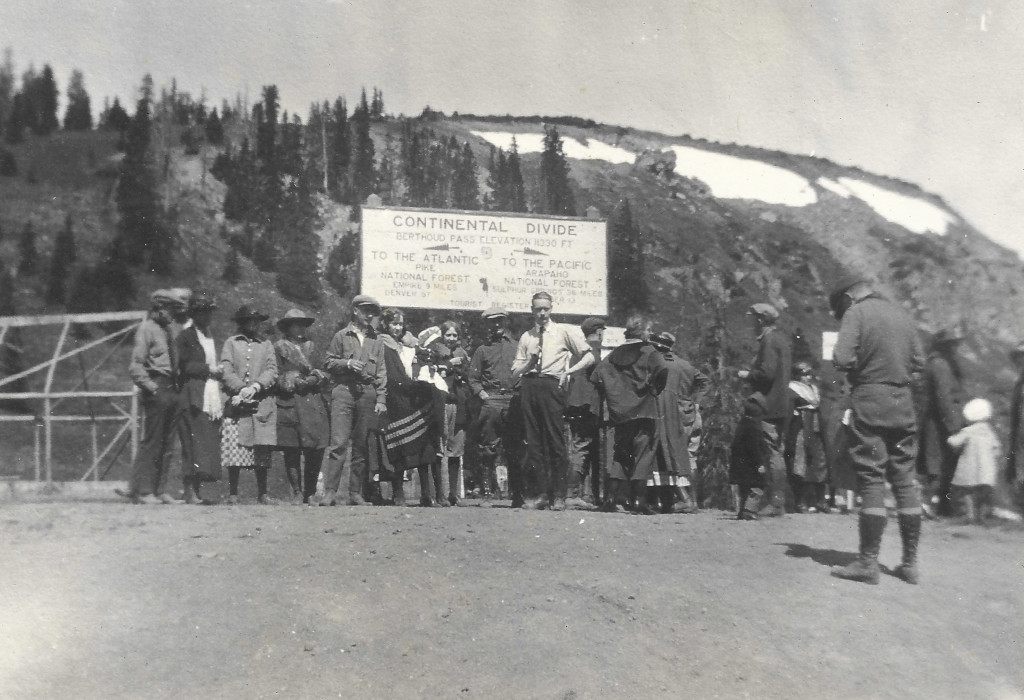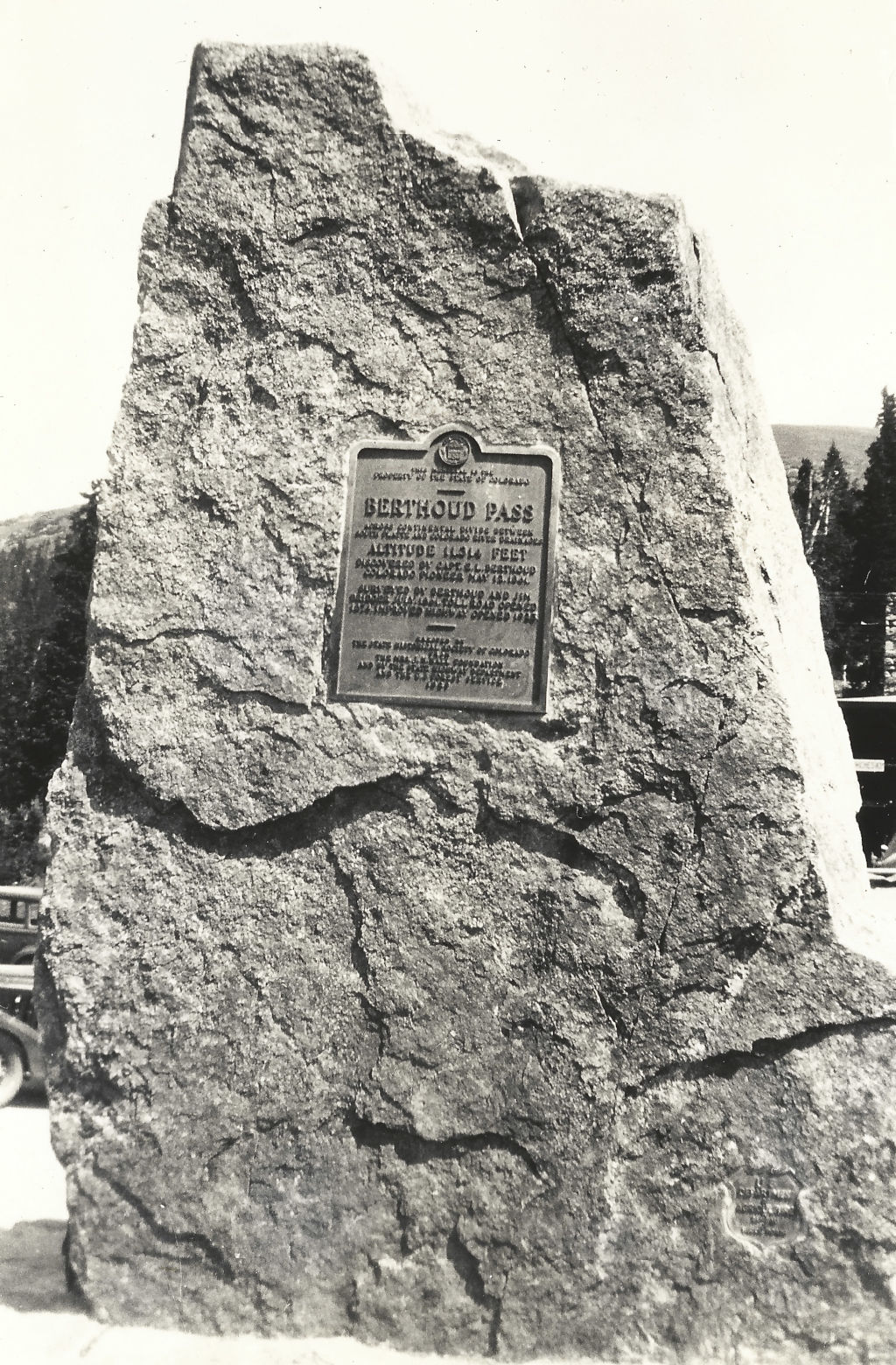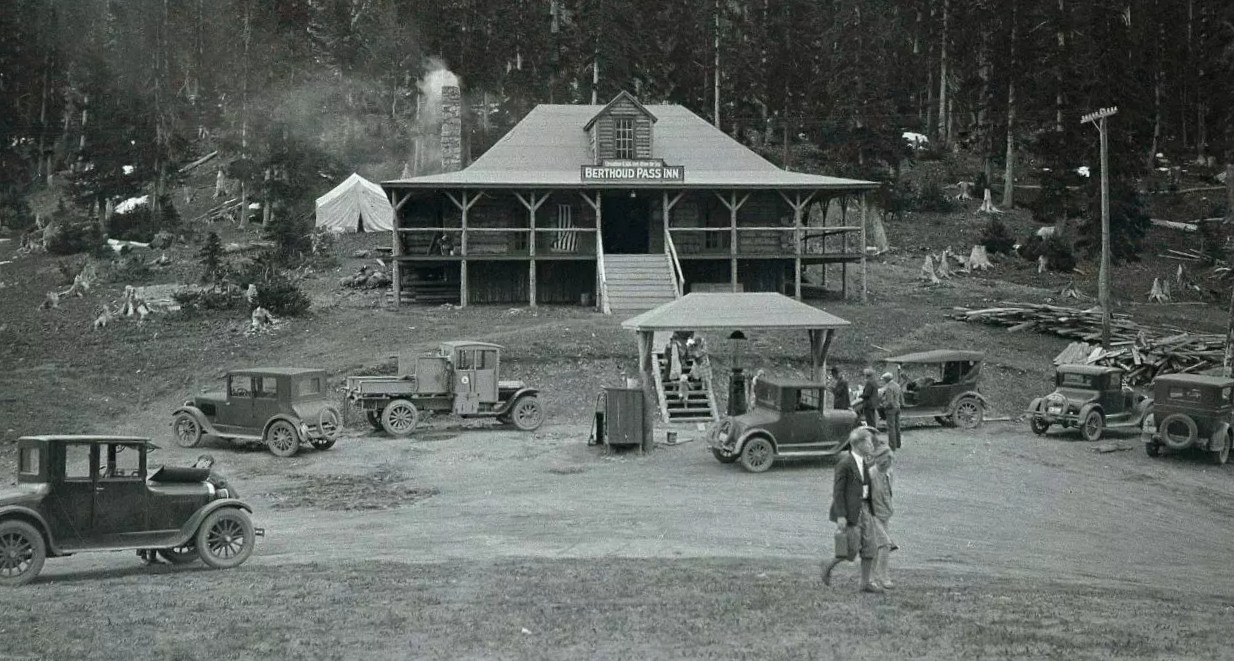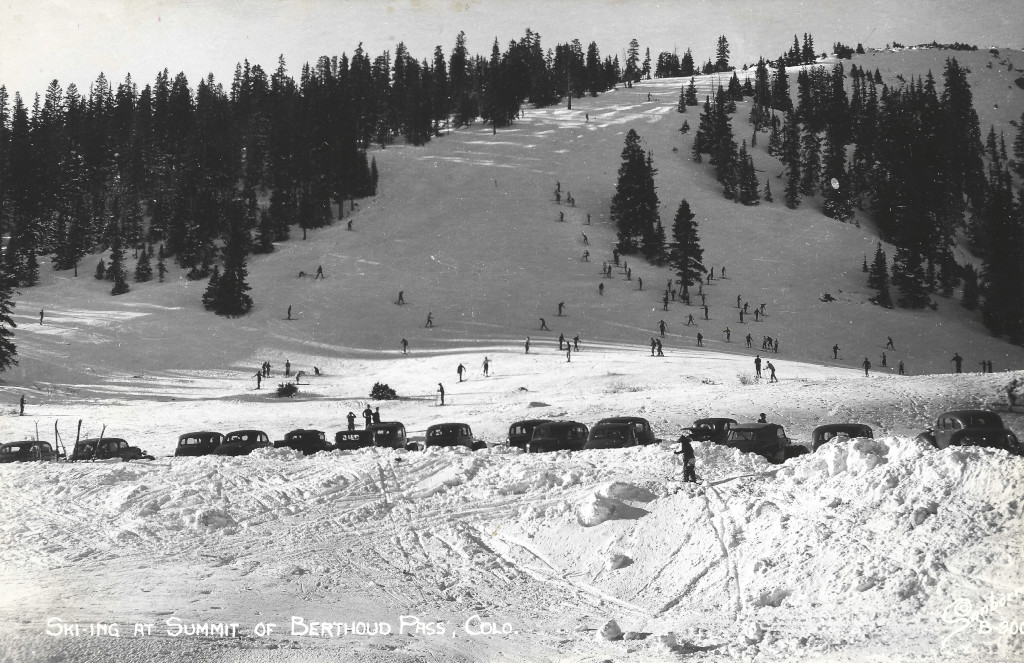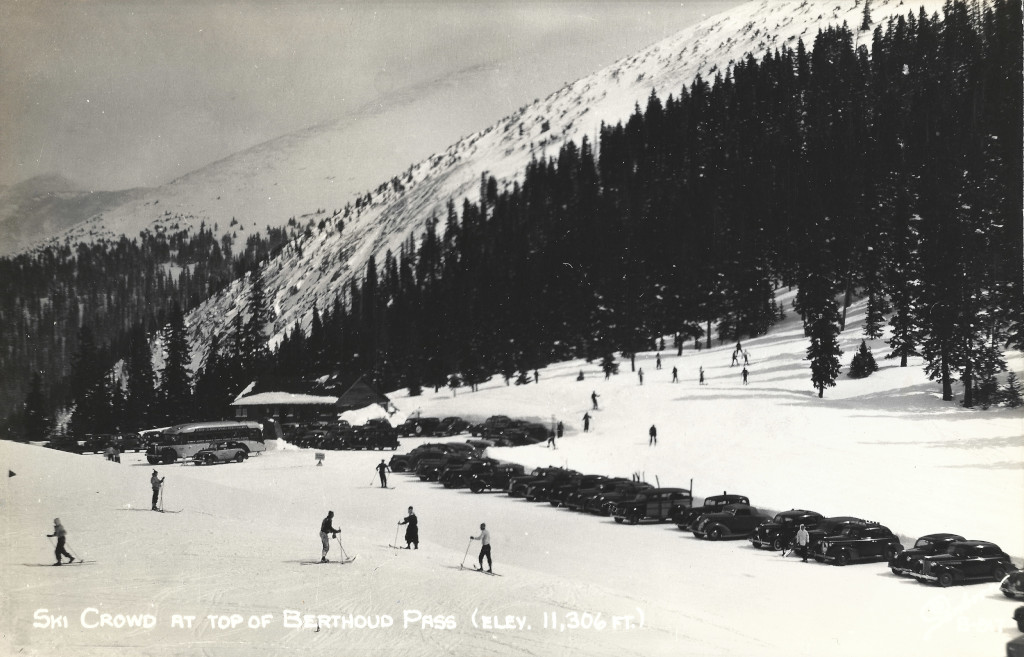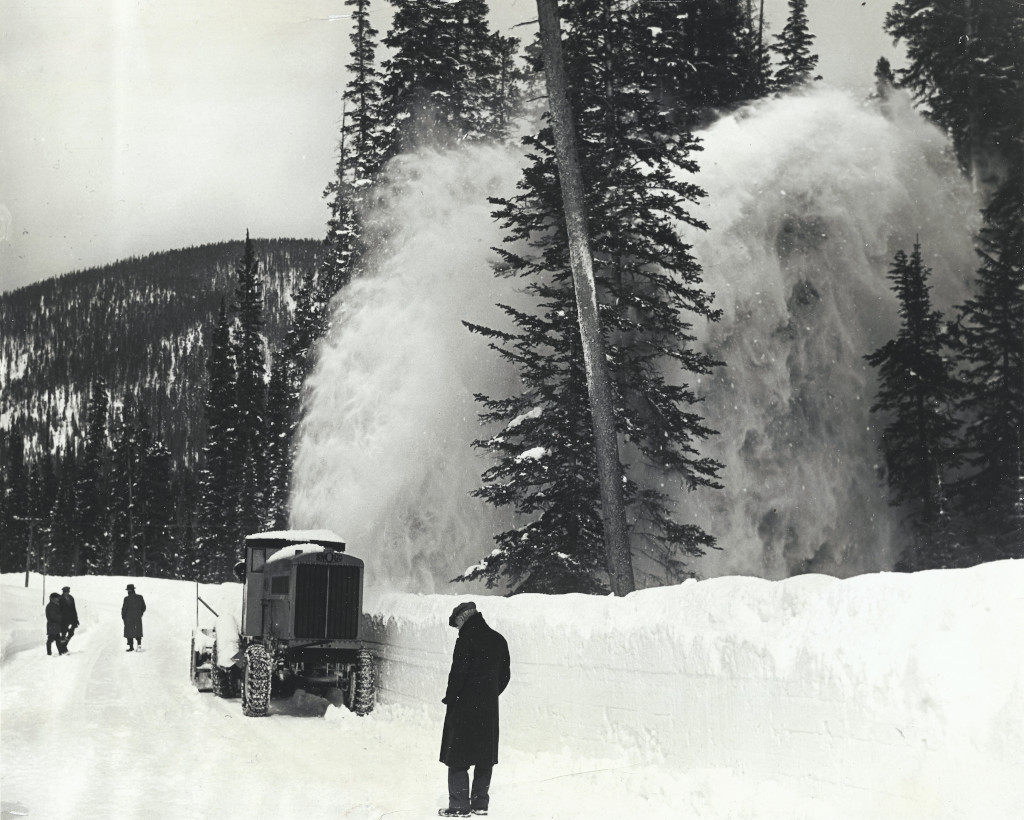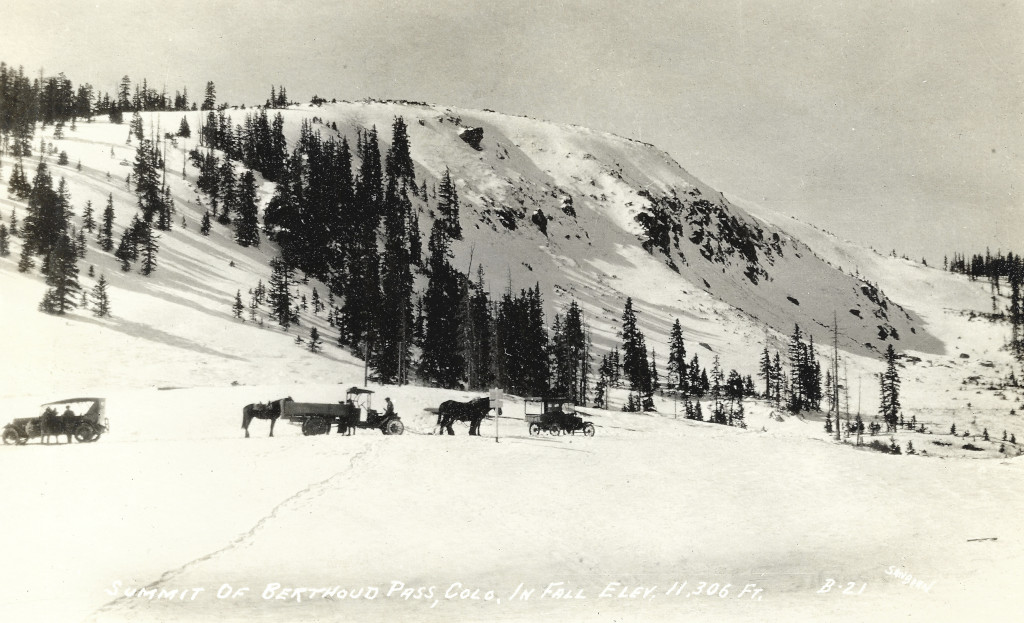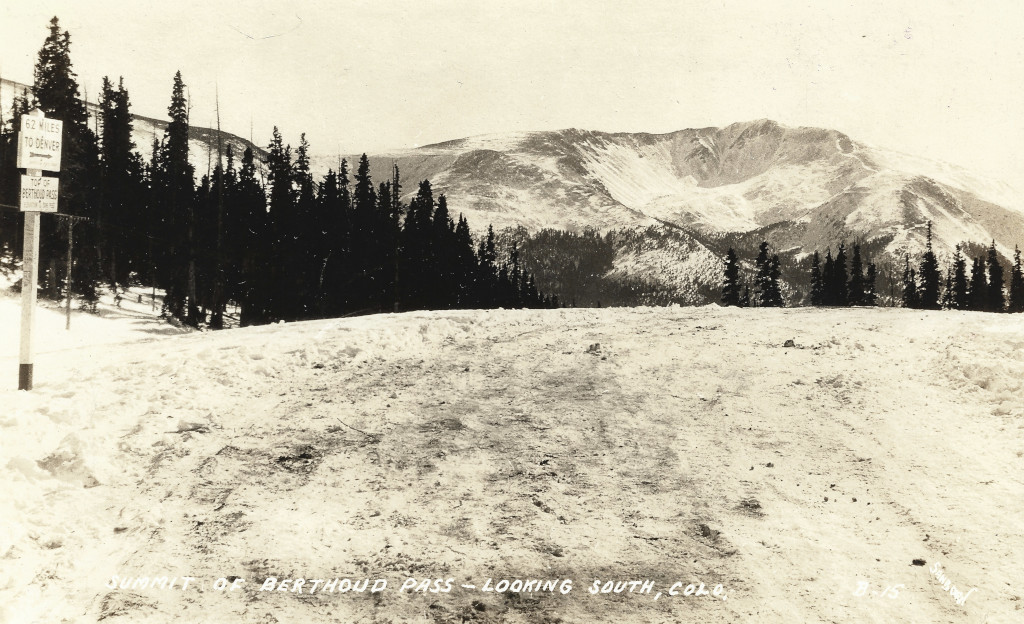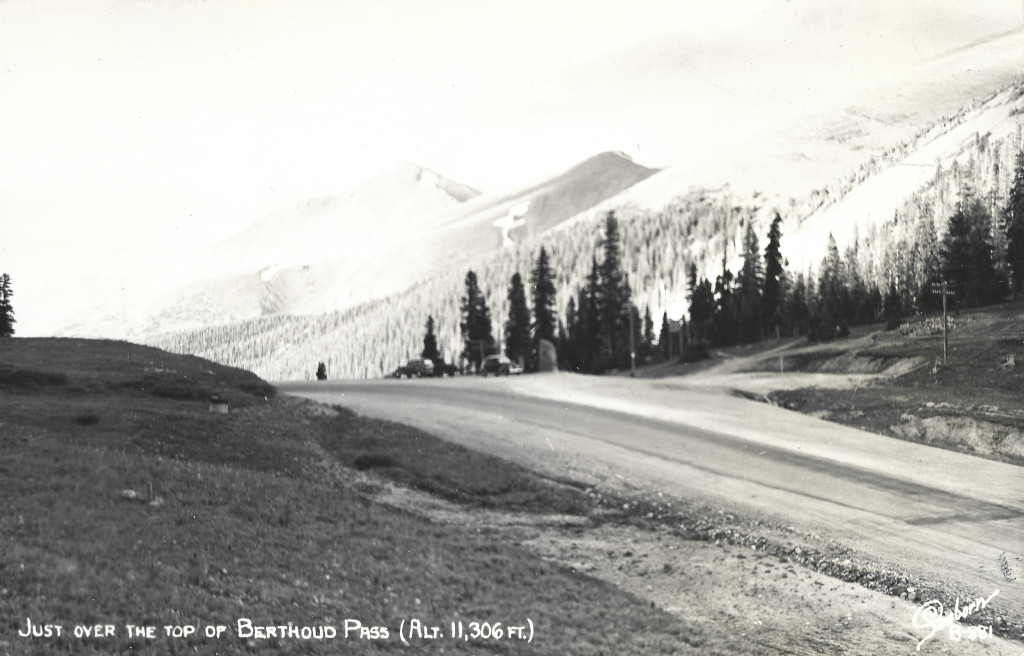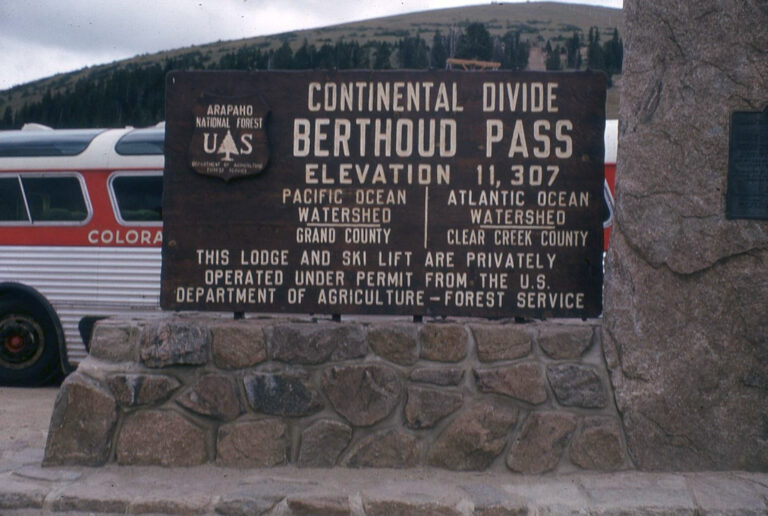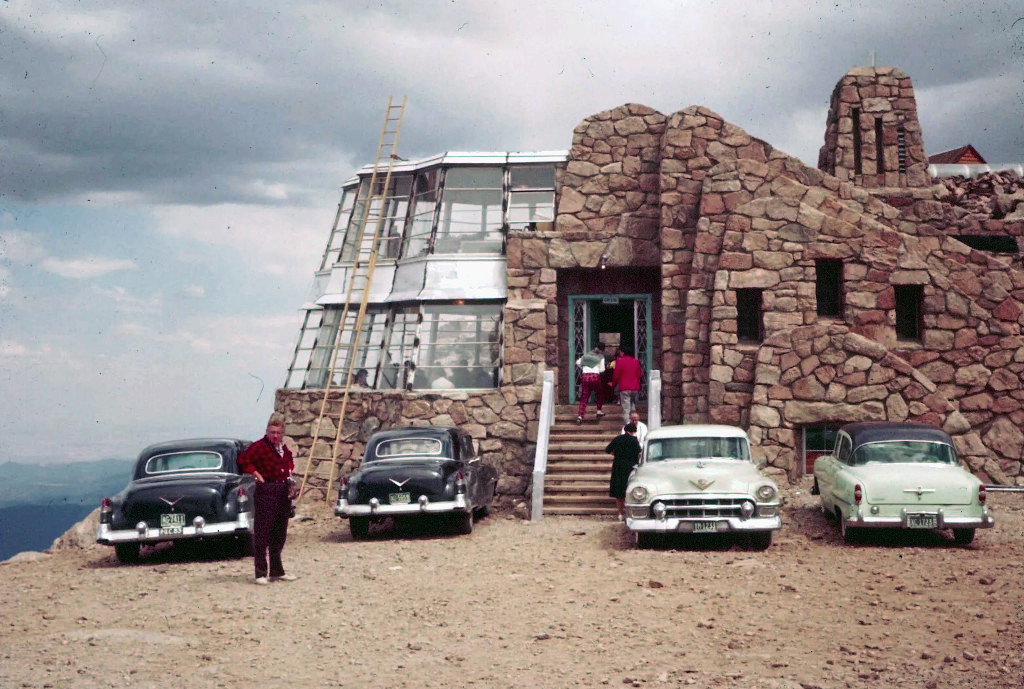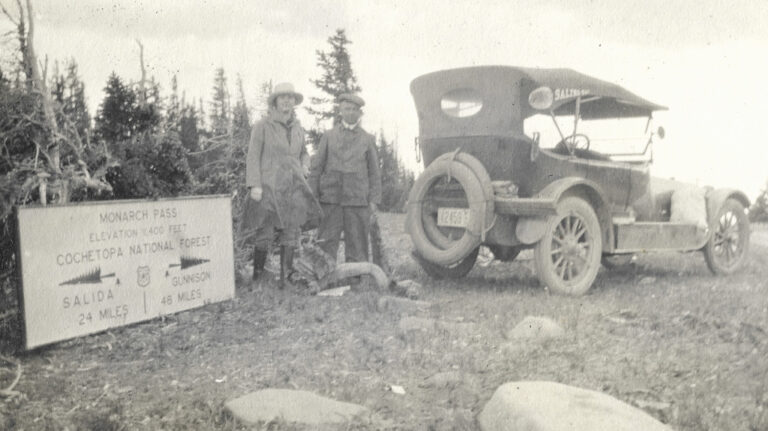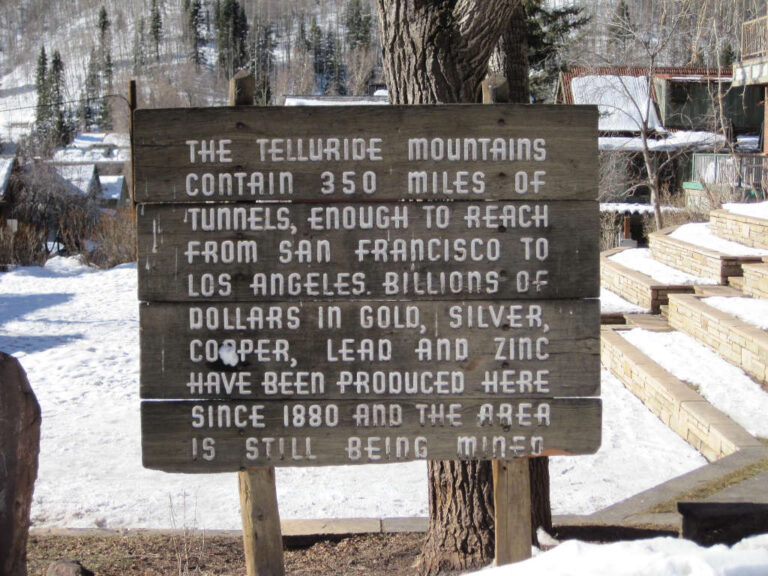Dirt roads were known for dust and quickly deteriorating road surfaces. One of the earliest efforts to deal with this on Berthoud Pass came in 1930. The process that was used was still referred to as ‘oiling’ rather than paving, but the oiling process had progressed significantly by the 1930s.
1930 – A bid of $27,385 (lowest bid) is placed by E.H Honnen, CO Springs, to surface 7.5 miles of road on Berthoud Pass.
The early oiling process that was used for the road on Berthoud Pass in 1930 looked like this: excavate, overhaul, lay down crushed rock/gravel, lay down another layer of supplemental crushed rock/gravel, add binding agent over the top.
E.H. Honnen won another bid in October, this time to grade and improve 4.5 miles of the Berthoud Pass road. The contract included grading, drainage and culvert work.
1931 – Work begins on an 8-mile section on the west side in May, expected to cost $218k. A second road improvement project covering 4.5 miles, costing $117k, is set to start on May 15th.
It was reported in September that work on an upgraded highway is not yet complete, but being anticipated for October of the next year.
1932 – Recommendations for Berthoud’s road construction in 1932 include $95k for surfacing. This would include an oil-topped finish for 10 miles on the west side, and 7.5 miles on the east. There were 13 miles still under reconstruction, and it was planned that a similar treatment would be given here at a later date.
Minimum wage for the contract was set by the state at 50 cents/hr., with a max of 30 hours/week.
The surface being called for this time was now more like a modern asphalting process. While those in the know no longer referred to this as oiling, that term was still used interchangeably with paving for at least another decade. This planned surface was set to have a bituminous top course. The contract this time now called for: crusher run bottom layer, prime coat treatment layer, pre-mixed oil surfacing layer, road oil layer, and a cut-back asphalt layer on top.
Hamilton & Gleason Co. from Denver wins the contract to surface 17.28 miles on Berthoud Pass.
Oiling had begun by October, and was completed in July 1933.
1933 – In October 1933, the state began taking bids on a contract to pave 12.4 miles of the pass. This contract called for a “plant mix bituminous top surface” over Berthoud Pass, from the foot of the pass on one side, to the foot of the pass on the other side.
1934 – There was still resurfacing to be done in the spring of 1934. This included eliminating sharp curves, lessening grades and widening roadbeds. The roadbed being built now was twice as wide as earlier construction. Similar work was being done on Rabbit Ears Pass, also located on US Highway 40, to the northwest.
There would be more paving contracts awarded in 1934…
Another contract for 12.4 miles of bituminous surface was awarded in the spring. This would include 15,800 tons of crushed rock, 800 tons of bituminous asphalt, 134k gallons of liquid asphalt material.
Another separate contract for 12.363 miles of surfacing work was announced in July.
Hamilton & Gleason wins a contract in August for ‘oiling’ that would connect with other existing oiled surfaces on both sides. This is an example of modern paving still being referred to as oiling.
It was reported that the paving work is done by October 1934.
1938 – A celebration was held Sunday July 3rd, to celebrate the continuous paved highway from coast to coast, although approximately 38 miles of the highway in Colorado had still not actually been paved yet.
The forest service estimated that 3,500 people took part in the celebration, and an additional 20K were sent over the pass because no more parking was available.
A count of 215 cars revealed license plates from 25 different states, including 2 from Maine and 6 from New York.

